The Good, Bad and Ugly of Every $100M Contract Given to an MLB Starting Pitcher
The Good, Bad and Ugly of Every $100M Contract Given to an MLB Starting Pitcher
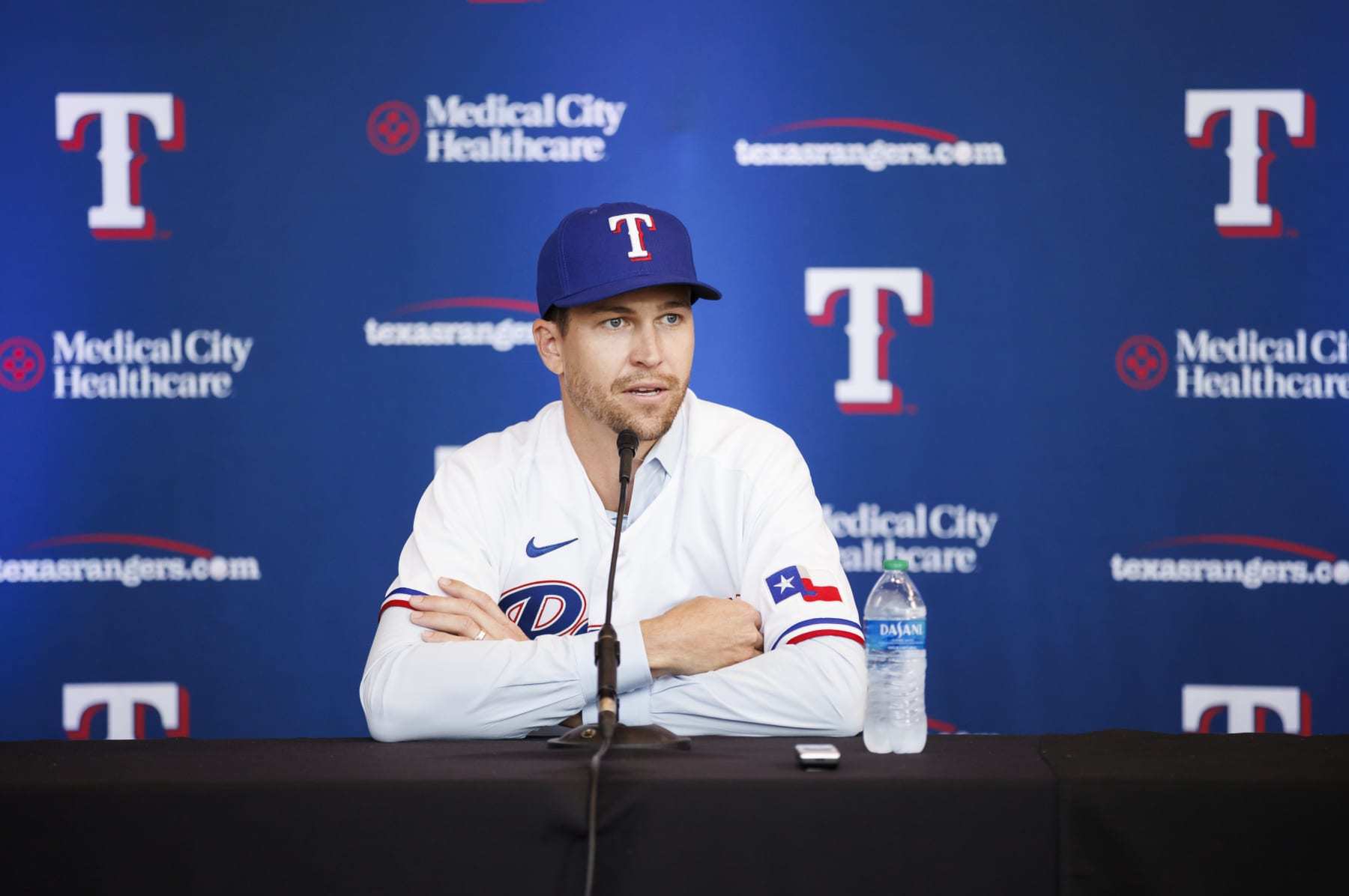
With inconsistent aging and less predictability when it comes to injury issues, MLB pitchers are the most volatile athletes in professional sports. That makes signing one to a $100 million-plus contract extremely risky.
At the same time, no team has ever won a World Series without quality starting pitching. It's often easy to look at that big-ticket free agent as the missing piece that can push your team over the top.
In some cases, that has been true. The Chicago Cubs' signing of Jon Lester and the Washington Nationals' signing of Max Scherzer were two notable examples.
Other times, it's nothing short of a disaster. Just say the name Jordan Zimmermann around a Detroit Tigers fan or Homer Bailey around a Cincinnati Reds fan and watch them cringe.
Here, we've taken a deep dive into the history of $100 million contracts for pitchers. We'll start with Kevin Brown signing the first $100 million deal ever with the Los Angeles Dodgers prior to the 1999 season and work all the way up to the five-year, $185 million deal that Jacob deGrom recently signed with the Texas Rangers.
The First $100 Million Deal Ever
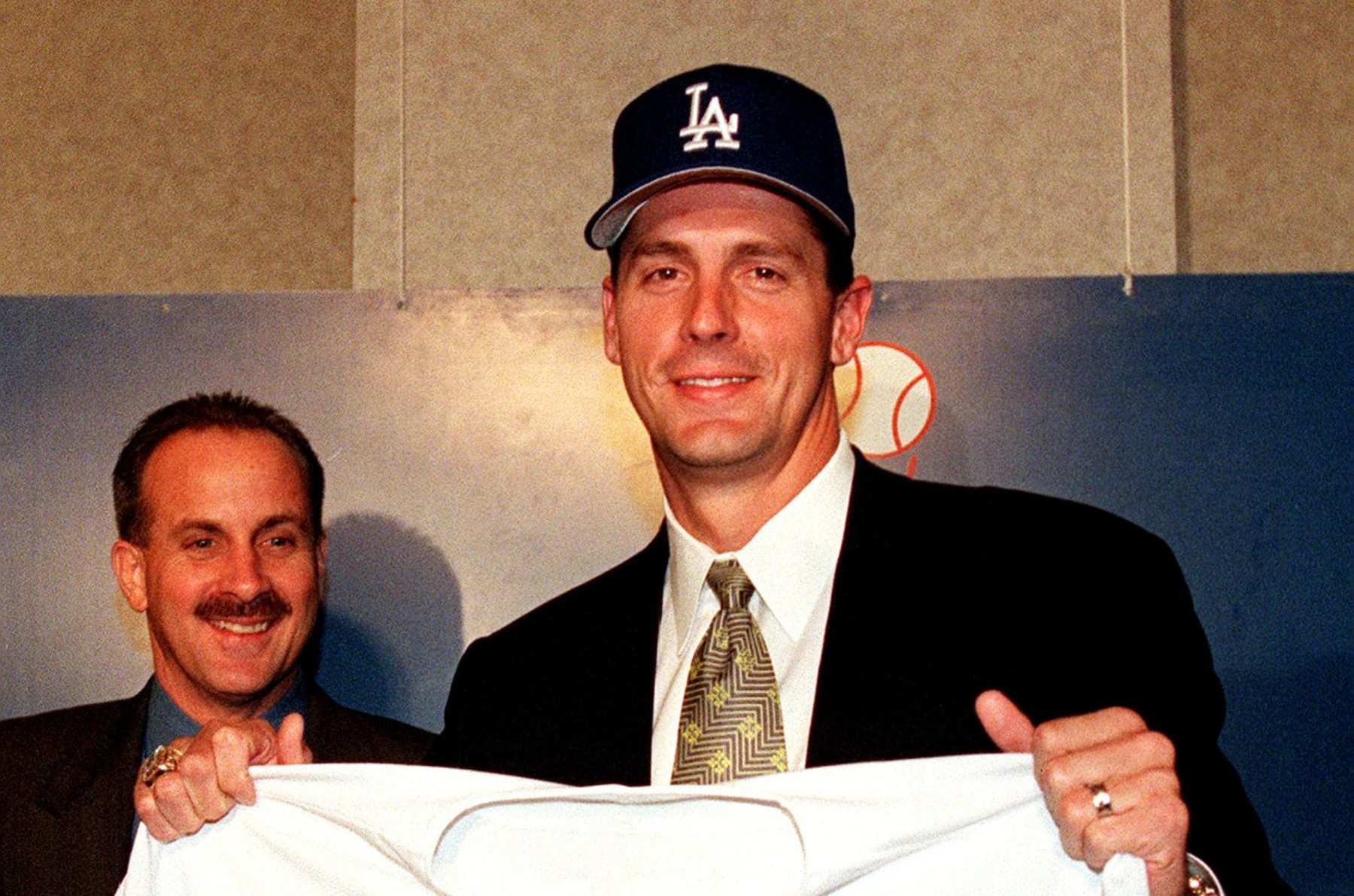
The Los Angeles Dodgers made history when they signed Kevin Brown to a seven-year, $105 million contract in 1998. They made him the first MLB player ever to receive a $100 million deal, fresh off a season in which he served as the ace of the staff for a San Diego Padres team that won the NL pennant.
"Nobody was within $20 million of that price tag for Kevin Brown," former Cincinnati Reds general manager Jim Bowden told Gabriel Baumgaertner of Sports Illustrated.
Despite varying opinions on his market value at the time, it's tough to argue with his production in the three years leading up to that deal:
1996: 32 GS, 17-11, 1.89 ERA, 0.94 WHIP, 159 K, 233.0 IP
1997: 33 GS, 16-8, 2.69 ERA, 1.18 WHIP, 205 K, 237.1 IP
1998: 35 GS, 18-7, 2.38 ERA, 1.07 WHIP, 257 K, 257.0 IP
Brown received only 2.1 percent of the vote in his lone year on the Hall of Fame ballot (2011), but he was unquestionably one of the best pitchers in the game at his peak.
His contract with the Dodgers started out well, as he finished in the top 10 in NL Cy Young voting in both 1999 and 2000 and won the NL ERA title in his second season with the team. However, injuries derailed his career from there, and he averaged only 119 innings per season over the final five years of the contract.
He spent the final two years of the deal with the New York Yankees before retiring at the age of 40.
The Next $100 Million Deal for a Pitcher
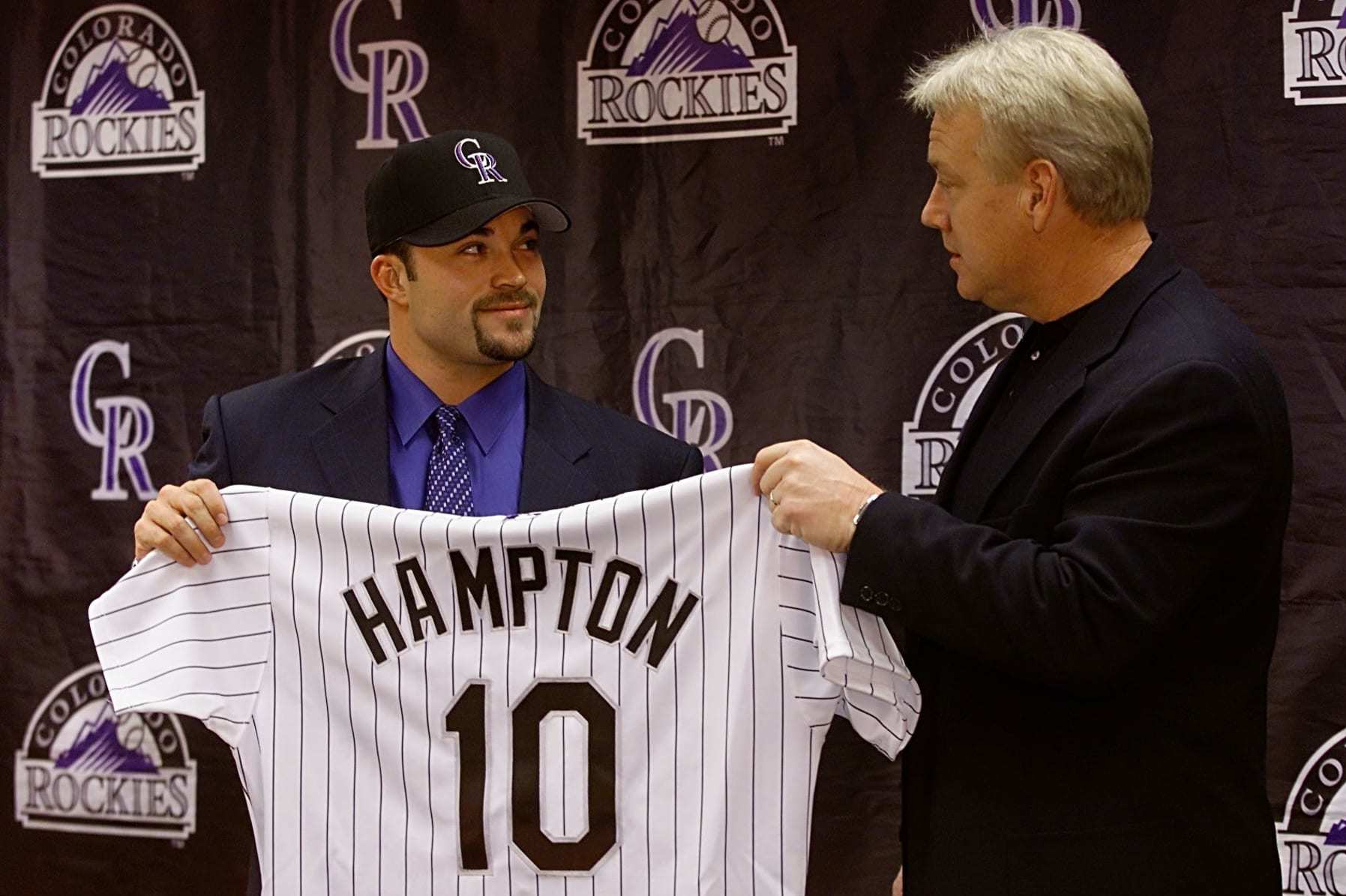
If the first $100 million deal ever given to a pitcher can be best described as a mixed bag, the next one was an unmitigated disaster.
Looking to finally build a viable starting rotation, the Colorado Rockies decided to go all-in during the 2000-01 offseason, signing Mike Hampton to an eight-year, $121 million deal just days after inking Denny Neagle to a five-year, $51 million contract.
Hampton, 28, went 15-10 with a 3.14 ERA in 217.2 innings with the New York Mets during the 2000 season, winning NLCS MVP while helping the club reach the World Series. He was also just a year removed from going 22-4 with a 2.90 ERA in 239 innings with the Houston Astros to finish runner-up in 1999 NL Cy Young voting.
In his first season in Colorado, Hampton made more headlines for his hitting than his pitching. He posted an .891 OPS with seven home runs in 86 plate appearances while going 14-13 with a 5.41 ERA (99 ERA+) in 32 starts.
Things went from bad to worse in his second season when he finished 7-15 with a 6.15 ERA (78 ERA+) in 30 starts. The Rockies cut their losses that offseason, trading him to the Atlanta Braves in a three-team deal that brought Charles Johnson and Preston Wilson to Colorado. The transaction saw a record $36.5 million change hands to help offset salaries.
To make matters worse, he quickly revived his career in Atlanta, logging a 3.96 ERA and 108 ERA+ in 431.2 innings during his first three years with the Braves.
A Six-Year Layoff

Due in large part to the Mike Hampton flop in Colorado, it took six years before another team handed a $100 million contract to a pitcher. Here is a quick rundown of the largest contract handed out to a pitcher each year during that dry spell:
2001-02 Offseason: Chan Ho Park, TEX—five years, $65 million
2002-03 Offseason: Tom Glavine, NYM—three years, $35 million
2003-04 Offseason: Bartolo Colón, ANA—four years, $51 million
2004-05 Offseason: Pedro Martínez, NYM—four years, $53 million
2005-06 Offseason: A.J. Burnett, TOR—five years, $55 million
It became clear the market was starting to pick up during the final two years of that span, with four-year deals also given out to Carl Pavano (4/$40M), Derek Lowe (4/$36M) and Russ Ortiz (4/$33M) during the 2004-05 offseason and Kevin Millwood (5/$60M) and Jarrod Washburn (4/$37.5M) during the 2005-06 offseason, but the gap to baseball's next $100 million pitcher was still a wide one.
The $100 Million Drought Is Broken
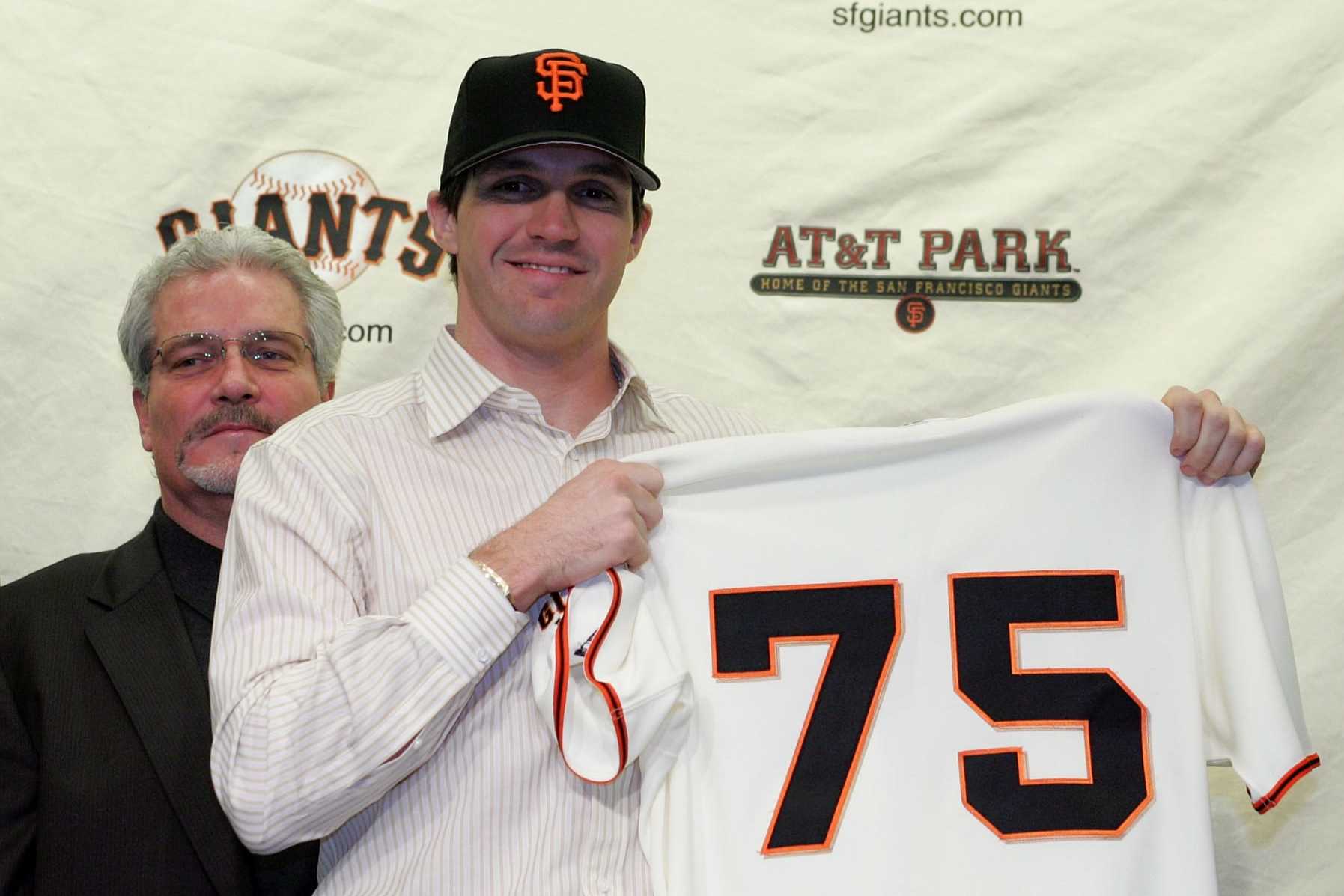
The drought of $100 million contracts for pitchers was finally broken when the San Francisco Giants inked left-hander Barry Zito to a seven-year, $126 million deal in December 2006.
While that was technically the only $100 million contract given to a starting pitcher that winter, it was not the only $100 million investment made on a rotation upgrade. The Boston Red Sox also signed Japanese phenom Daisuke Matsuzaka to a six-year, $52 million contract, but only after paying a $51.1 million posting fee to his team in Japan.
Zito was 28 years old when he signed his record-setting deal. He had been a durable workhorse in Oakland the previous six seasons, making at least 34 starts every year while averaging 223 innings. He logged a 3.61 ERA during that span, made three All-Star teams and won 2002 AL Cy Young honors.
While that durability remained over the first four years of his new contract, his performance immediately fell off and never returned to Oakland levels. He chewed through 1139.1 innings over the life of his contract with the Giants, but he pitched to only a 4.62 ERA and 87 ERA+.
Many Giants fans will defend the value of this signing to the death thanks to a few clutch starts in October, but $126 million for 2.4 WAR is hard to frame as anything but an all-time overpay.
The First $100 Million Extension for a Pitcher
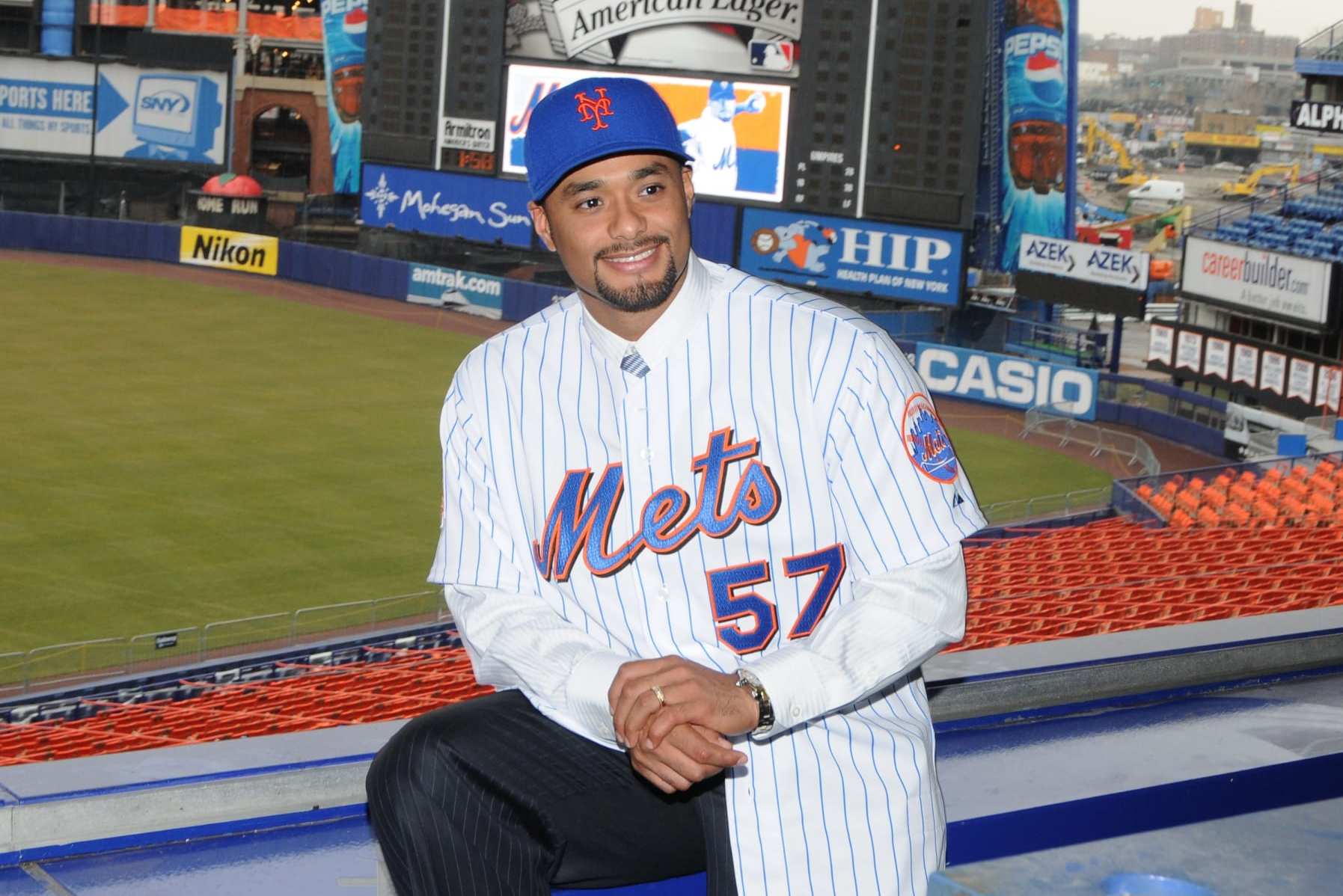
On Feb. 1, 2008, the New York Mets acquired left-hander Johan Santana from the Minnesota Twins in exchange for four prospects, headlined by Carlos Gómez (No. 60 prospect in MLB) and Philip Humber (No. 73 prospect in MLB).
The trade was contingent on Santana agreeing to terms on an extension with the Mets, which he did just before the deadline to finalize the deal. He inked a six-year, $137.5 million contract that was the largest ever for a pitcher at the time and also the first $100 million-plus extension for a pitcher.
The AL Cy Young winner in 2004 and 2006, Santana was 28 years old at the time of the trade. He was coming off another strong season where he finished fifth in AL Cy Young balloting with a 3.33 ERA and 235 strikeouts in 219 innings.
Santana was terrific in his first season with the Mets, leading the NL in ERA (2.53) and innings pitched (234.1), and he had a 2.85 ERA in 600 innings over the first three years of his contract. However, injuries limited him to only 117 innings over the final three seasons, and he missed the entirety of the 2011 and 2013 campaigns.
Most notably, Santana never made a postseason appearance in a Mets uniform.
Teams Take Care of Their Own Aces
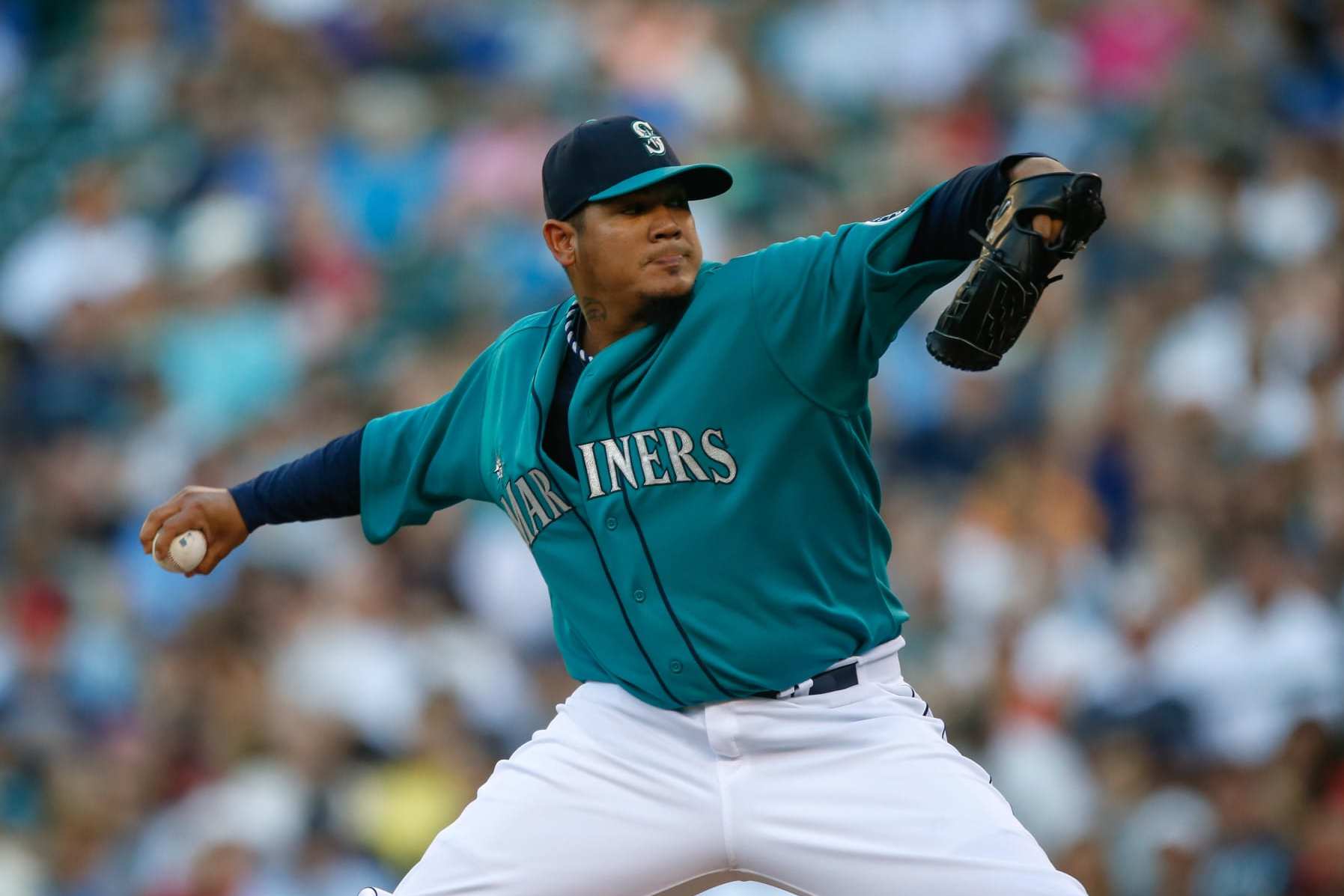
During the six-year stretch starting with the 2008-09 offseason and ending with the 2013-14 offseason, there were 12 different $100 million contracts given to pitchers, but the vast majority of those were extensions.
Here's a look at who got paid to stay with their current clubs:
Matt Cain, SF—six years, $127.5 million
Cole Hamels, PHI—six years, $144 million
Felix Hernandez, SEA—seven years, $175 million
Justin Verlander, DET—seven years, $180 million
Stephen Strasburg, WAS—seven years, $175 million
Homer Bailey, CIN—six years, $105 million
Clayton Kershaw, LAD—seven years, $215 million
Not included in that group is the five-year, $122 million deal that CC Sabathia signed to stay with the New York Yankees after he opted out of the final four years of the initial seven-year, $161 million he signed to join the team in free agency.
This six-year window highlighted here is bookended by a pair of Yankees deals, starting with that initial Sabathia contract and ending with the seven-year, $155 million deal given to Masahiro Tanaka.
The only other free-agent signings north of $100 million during that time were Cliff Lee to the Philadelphia Phillies (5/$120M) and Zack Greinke to the Los Angeles Dodgers (6/$147M). Greinke opted out of his contract after three years.
Outside of the Homer Bailey extension, which is easily the most head-scratching $100 million contract given out, teams mostly spent wisely when it came to pitching during this span.
The 2014-15 Offseason
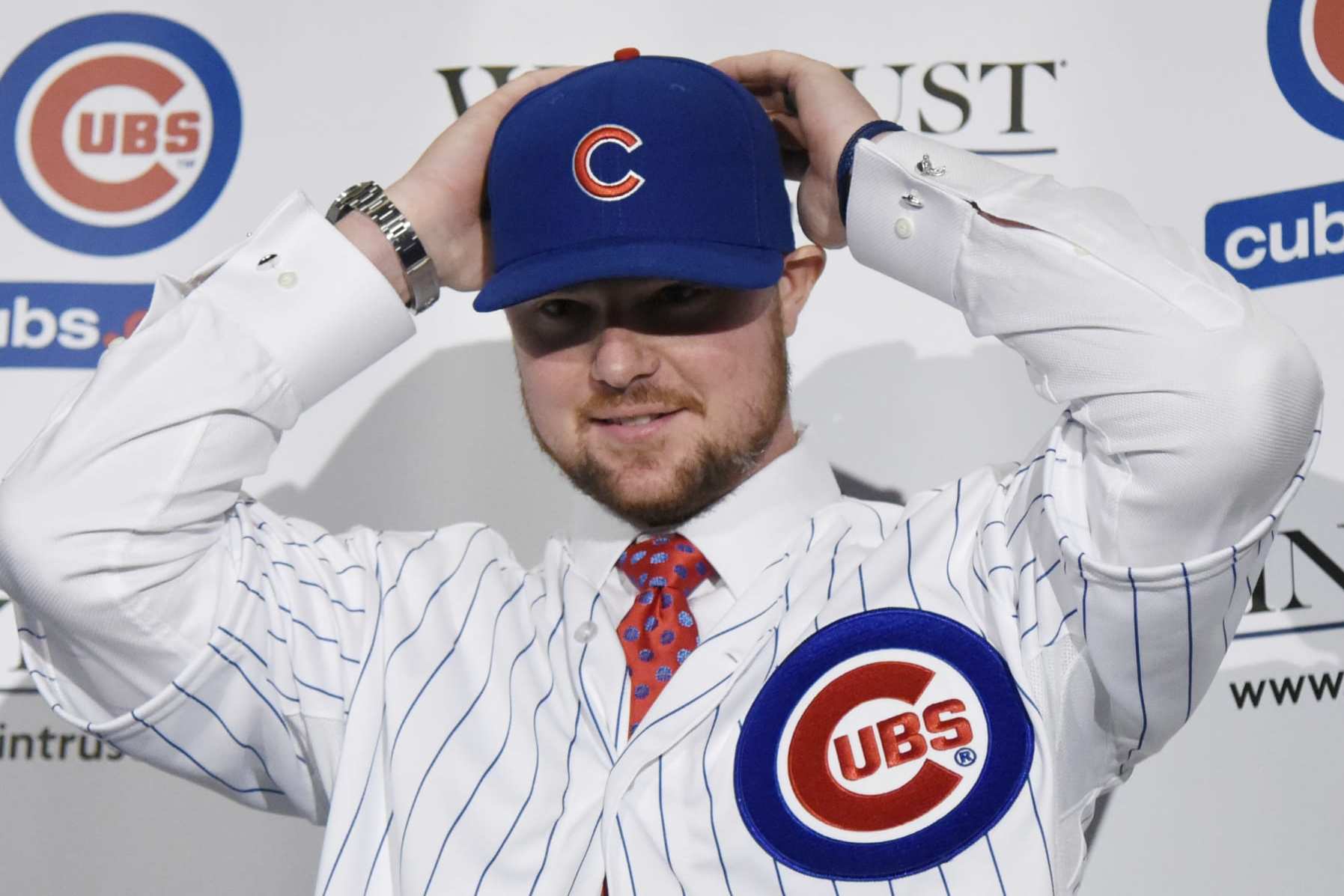
The MLB landscape was dramatically altered during the 2014-15 offseason, starting with the Chicago Cubs making their move at the annual winter meetings.
Ready to make the jump from rebuilding to contending with a dynamic young core, the Cubs landed left-hander Jon Lester with a six-year, $155 million deal. Two years later, he helped snap a 108-year World Series drought. While his numbers declined over the final two years of his contract, the signing goes down as an unquestionable success.
A month after Lester joined the Cubs, the Washington Nationals reeled in Max Scherzer on a seven-year, $210 million deal.
He won back-to-back NL Cy Young Awards in 2016 and 2017 before he also helped deliver a World Series title in 2019. His tenure with the Nationals ended when he was traded to the Los Angeles Dodgers at the 2021 deadline, but it will go down as one of the most successful big-money signings in pro sports history.
For all of the flops and cautionary tales on this list, the signings of Lester and Scherzer directly impacted World Series titles. The Cubs and Nationals would not have hoisted the trophy without the significant money they spent on those two during the 2014-15 offseason.
The 2015-16 Offseason
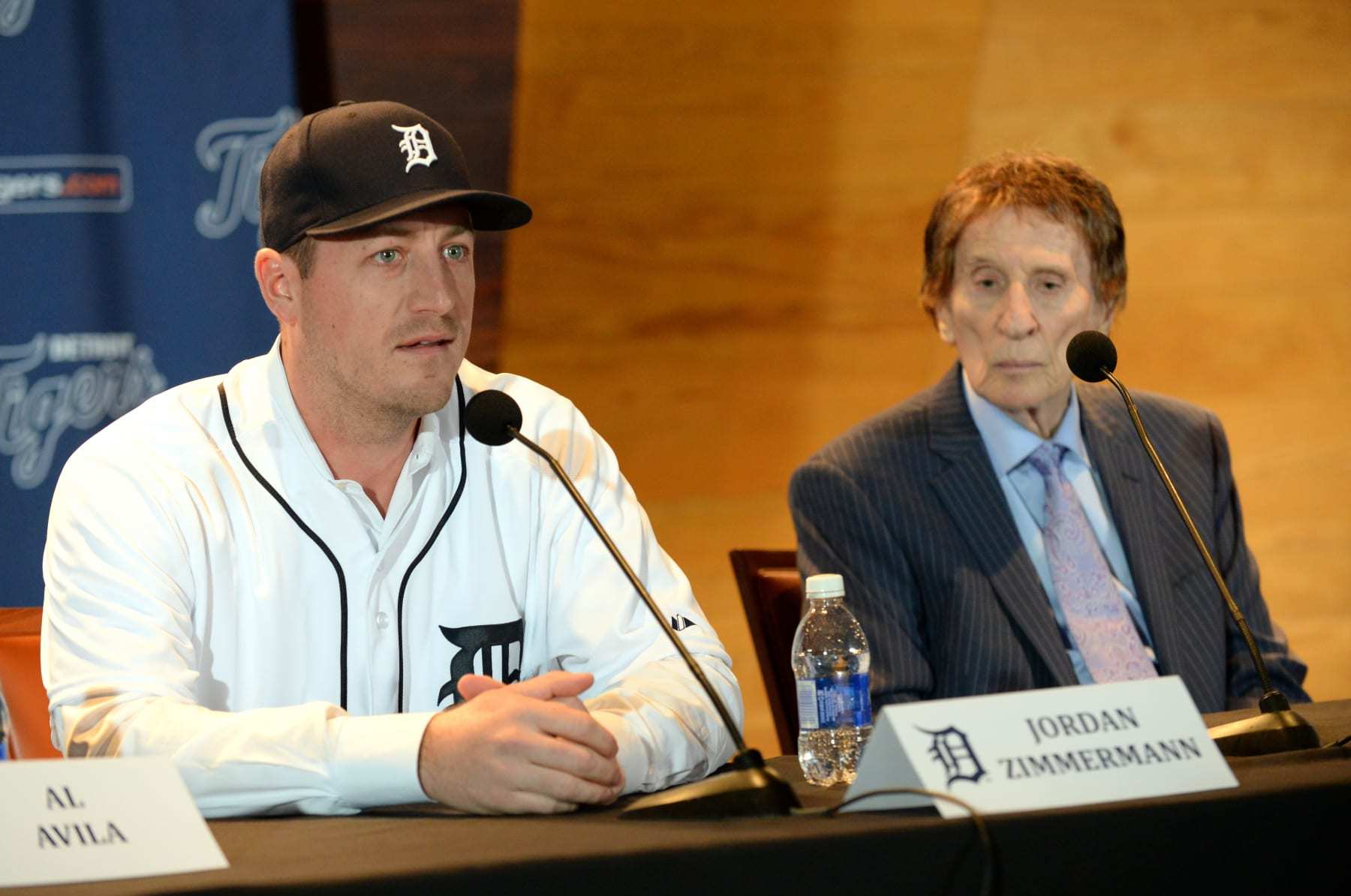
Seemingly encouraged by the immediate success that both Max Scherzer and Jon Lester enjoyed with their new teams during the 2015 season, the 2015-16 offseason saw four pitchers cash in with $100 million deals in free agency.
David Price, BOS—seven years, $217 million
Zack Greinke, ARI—six years, $206.5 million
Johnny Cueto, SF—six years, $130 million
Jordan Zimmermann, DET—five years, $110 million
The same offseason also saw Jeff Samardzija (5/$90M), Wei-Yin Chen (5/$80M), Mike Leake (5/$80M), Ian Kennedy (5/$70M) and Scott Kazmir (3/$48M) sign lucrative multiyear deals in what would quickly serve as a cautionary tale not to let the top-end of the market dictate middle-of-the-market spending.
Price helped Boston win a World Series before injuries derailed him, and Cueto had a few solid seasons in San Francisco before doing the same, but this was mostly a disaster across the board.
Zimmermann will go down as one the worst free-agent signings in MLB history after producing a 5.63 ERA (80 ERA+), 1.44 WHIP and 2.0 WAR in 99 appearances over his five years in Detroit.
The Good, The Bad, The Too Soon to Tell
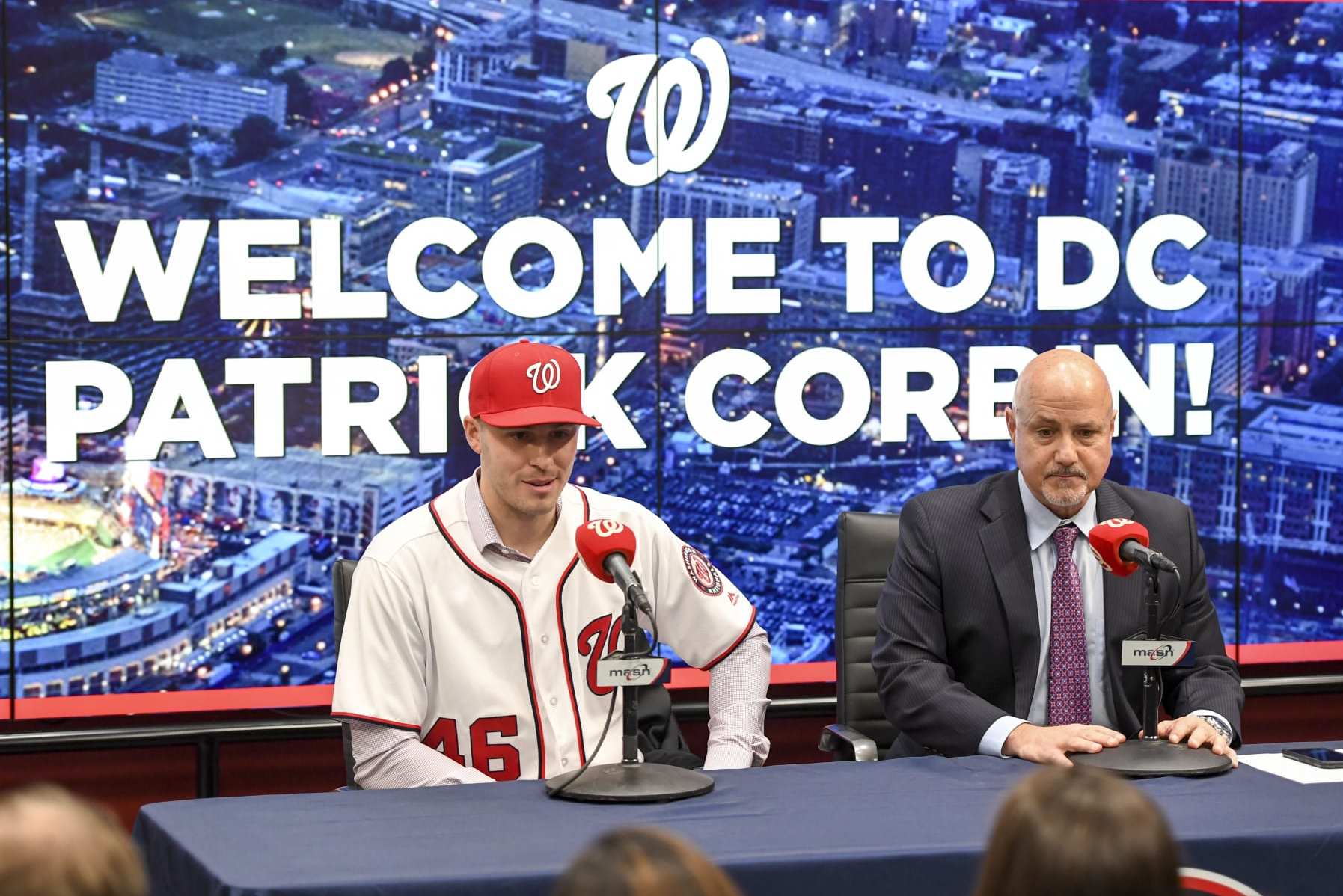
Since zero $100 million contracts were given to starters during the 2016-17 offseason—that was instead a big year for relievers, with Aroldis Chapman (5/$86M), Kenley Jansen (5/$80M) and Mark Melancon (4/$62M) outearning any starter on the market—we have not seen a winter go by without at least one nine-figure contract handed to a starting pitcher.
A total of 15 different $100 million contracts have been given to starting pitchers over the last six offseasons. That number could soon grow to 16 if left-hander Carlos Rodón joins the club as expected.
Some of those deals look great.
Yu Darvish (6/$126M) is entering the final season of his contract and is still going strong. Zack Wheeler (5/$118M) has been terrific through his first three seasons in Philadelphia. Despite some injury issues, it's tough to argue with the extensions given to Chris Sale (5/$145M) and Jacob deGrom (5/$137.5M).
On the other end of the spectrum, the Washington Nationals have two of the worst contracts in baseball on the books in Patrick Corbin (6/$140M) and Stephen Strasburg (7/$245M). Corbin helped the Nationals win a title in his first season with the team, and that title run earned Strasburg his massive extension after he opted out, but those deals are both eyesores.
The Trevor Bauer (3/$102M) deal with the Los Angeles Dodgers also undoubtedly belongs in this category, though they've managed to recoup much of that money while he's suspended.
We'll file the rest under the too-soon-to-tell category:
Gerrit Cole, NYY—nine years, $324 million
Max Scherzer, NYM—three years, $130 million
Robbie Ray, SEA—five years, $115 million
Kevin Gausman, TOR—five years, $110 million
José Berríos, TOR—seven years, $131 million
Luis Castillo, SEA—five years, $108 million
Joe Musgrove, SD—five years, $100 million
Jacob deGrom, TEX—five years, $185 million
Cole has provided the Yankees with a bona fide ace in his first three seasons in New York, but until he helps deliver a ring, his record-setting deal will be considered a flop.
The entire narrative would shift on the contracts for guys like Ray and Castillo in Seattle and Gausman and Berríos in Toronto if those teams win a World Series in the next few years.
There's no obvious conclusion to draw on whether $100 million contracts for pitchers are a good idea or a bad idea. It's probably easiest to classify them as a necessary evil in today's game. While relying on cost-controlled, homegrown arms will always be the preference, the missing piece could be that big money free-agent signing to round out the staff.
Full $100 Million Starting Pitcher List

$100 Million Starting Pitcher Contracts
Gerrit Cole, NYY (2020-28)—nine years, $324 million
Stephen Strasburg, WAS (2020-26)—seven years, $245 million
David Price, BOS (2016-22)—seven years, $217 million
Clayton Kershaw, LAD (2014-20)—seven years, $215 million
Max Scherzer, WAS (2015-21)—seven years, $210 million
Zack Greinke, ARI (2016-21)—six years, $206.5 million
Jacob deGrom, TEX (2023-27)—five years, $185 million
Justin Verlander, DET (2013-19)—seven years, $180 million
Félix Hernández, SEA (2013-19)—seven years, $175 million
Stephen Strasburg, WAS (2013-19)—seven years, $175 million
CC Sabathia, NYY (2009-15)—seven years, $161 million
Jon Lester, CHC (2015-20)—six years, $155 million
Masahiro Tanaka, NYY (2014-20)—seven years, $155 million
Zack Greinke, LAD (2013-18)—six years, $147 million
Chris Sale, BOS (2020-24)—five years, $145 million
Cole Hamels, PHI (2013-18)—six years, $144 million
Patrick Corbin, WAS (2019-24)—six years, $140 million
Johan Santana, NYM (2008-13)—six years, $137.5 million
Jacob deGrom, NYM (2019-23)—five years, $137.5 million
José Berríos, TOR (2022-28)—seven years, $131 million
Max Scherzer, NYM (2022-24)—three years, $130 million
Johnny Cueto, SF (2016-21)—six years, $130 million
Matt Cain, SF (2012-17)—six years, $127.5 million
Yu Darvish, CHC (2018-23)—six years, $126 million
Barry Zito, SF (2007-13)—seven years, $126 million
CC Sabathia, NYY (2012-16)—five years, $122 million
Mike Hampton, COL (2001-08)—eight years, $121 million
Cliff Lee, PHI (2011-15)—five years, $120 million
Zack Wheeler, PHI (2020-24)—five years, $118 million
Robbie Ray, SEA (2022-26)—five years, $115 million
Jordan Zimmermann, DET (2016-20)—five years, $110 million
Kevin Gausman, TOR (2022-26)—five years, $110 million
Luis Castillo, SEA (2023-27)—five years, $108 million
Homer Bailey, CIN (2014-19)—six years, $105 million
Kevin Brown, LAD (1999-05)—seven years, $105 million
Trevor Bauer, LAD (2021-23)—three years, $102 million
Joe Musgrove, SD (2023-27)—five years, $100 million
$100 Million Pitcher Fun Facts

Let's slap a bow on this deep dive into $100 million pitchers with some fun facts:
- Despite the steady increase in spending over the years, there are still 14 teams that have never signed a pitcher to a $100 million contract: the Angels, Astros, Athletics, Braves, Brewers, Cardinals, Guardians, Marlins, Orioles, Pirates, Royals, Twins, Rays and White Sox.
- Clayton Kershaw (2014), Max Scherzer (2016, 2017) and Jacob deGrom (2019) are the only pitchers to win a Cy Young Award while playing on a $100 million contract.
- Max Scherzer is the first pitcher ever to sign two $100 million contracts without using an opt-out clause. Zack Greinke, deGrom, CC Sabathia and Stephen Strasburg all signed their second $100 million-plus deal after opting out of their previous contract.
- Nine different pitchers were traded during their $100 million contracts—Kevin Brown (LAD to NYY), Mike Hampton (COL to ATL), Cole Hamels (PHI to TEX), Justin Verlander (DET to HOU), Homer Bailey (CIN to LAD), Scherzer (WAS to LAD), Greinke (ARI to HOU), David Price (BOS to LAD) and Yu Darvish (CHC to SD).
- Who might be next to join the $100 million club? We've already mentioned Carlos Rodón this offseason. Julio Urías and Aaron Nola are both safe bets among the 2023-24 free-agent class, while Jack Flaherty, Luis Severino and Lucas Giolito could get there as well with bounce-back seasons. And then, of course, there's Shohei Ohtani.
All stats courtesy of Baseball Reference, while contract info comes via Spotrac and various news articles.
